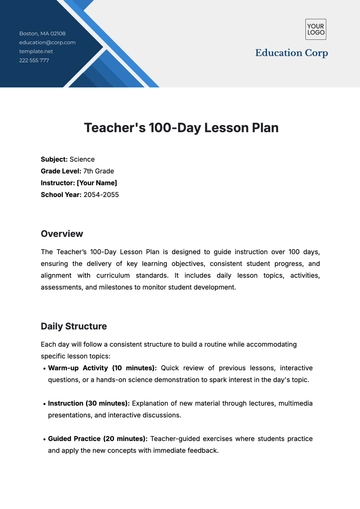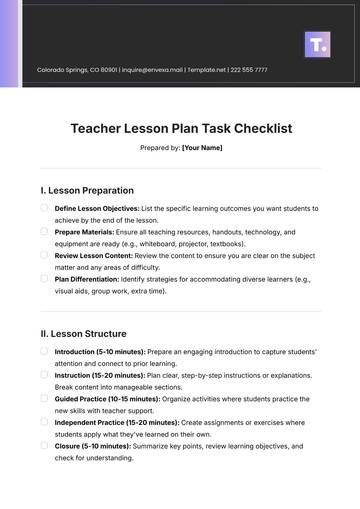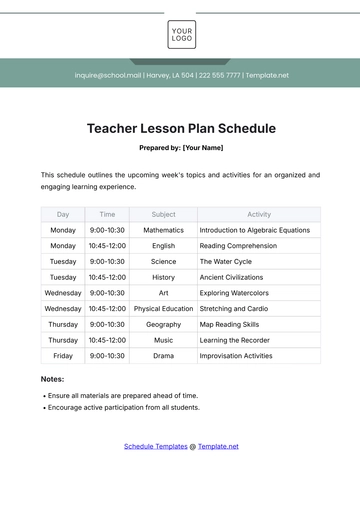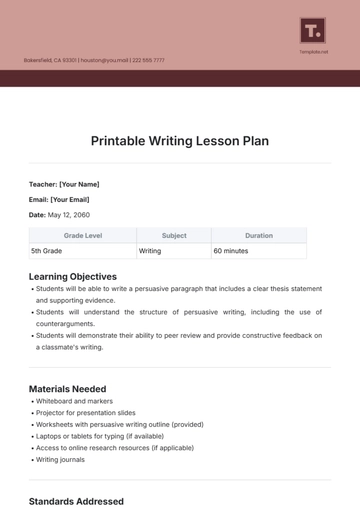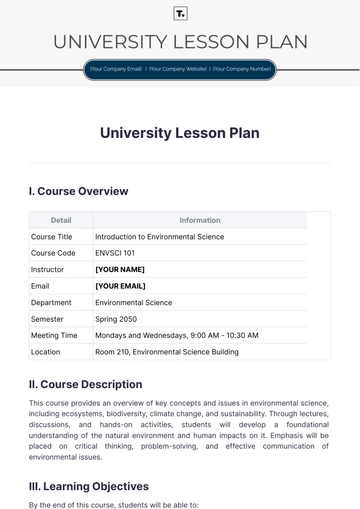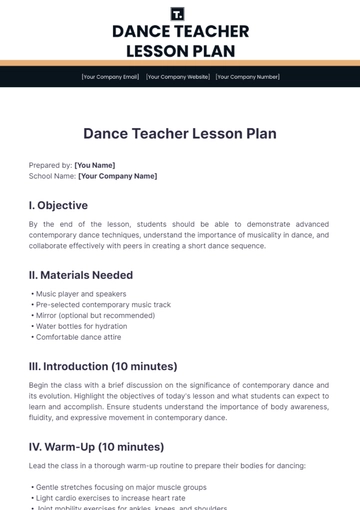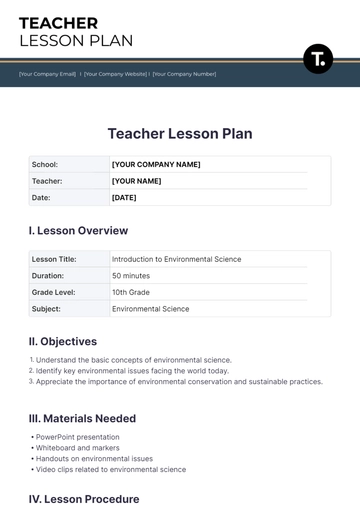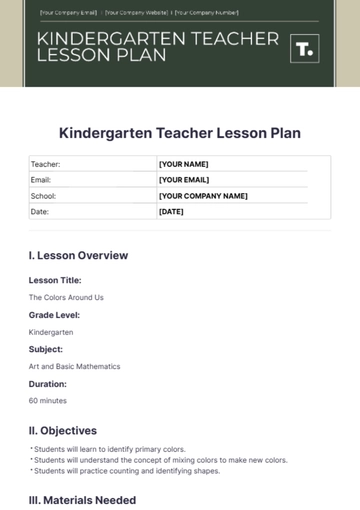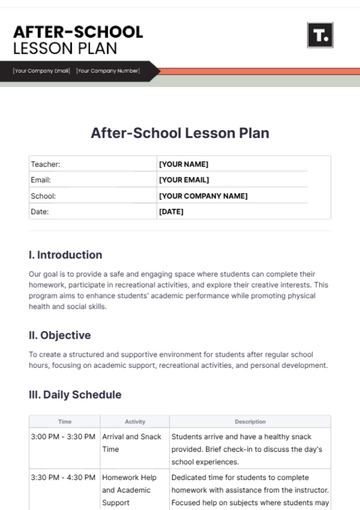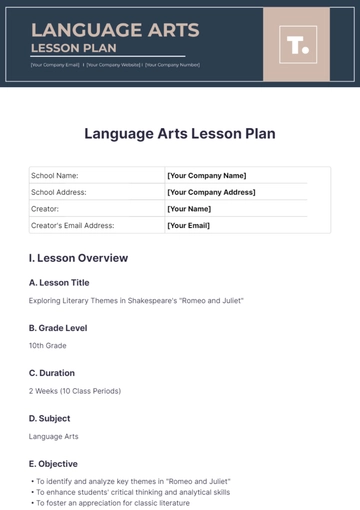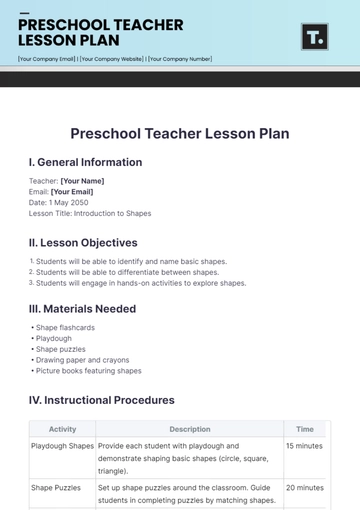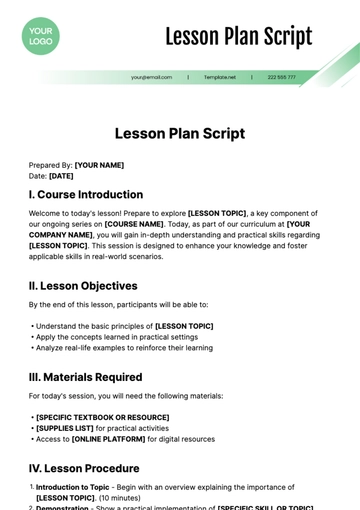Free Teacher Lesson Plan

School: | [YOUR COMPANY NAME] |
|---|---|
Teacher: | [YOUR NAME] |
Date: | [DATE] |
I. Lesson Overview
Lesson Title: | Introduction to Environmental Science |
|---|---|
Duration: | 50 minutes |
Grade Level: | 10th Grade |
Subject: | Environmental Science |
II. Objectives
Understand the basic concepts of environmental science.
Identify key environmental issues facing the world today.
Appreciate the importance of environmental conservation and sustainable practices.
III. Materials Needed
PowerPoint presentation
Whiteboard and markers
Handouts on environmental issues
Video clips related to environmental science
IV. Lesson Procedure
1. Introduction (5 minutes):
Greet students and introduce the topic of environmental science.
Discuss the importance of studying environmental science.
2. Presentation (15 minutes):
Use PowerPoint presentation to introduce basic concepts of environmental science.
Cover topics such as ecosystems, biodiversity, and natural resources.
3. Activity (15 minutes):
Divide students into groups and give each group a handout on a specific environmental issue (such as deforestation, climate change, and pollution).
Have students discuss the causes and effects of the issue and come up with possible solutions.
4. Discussion (10 minutes):
Lead a class discussion based on the group activities.
Encourage students to share their thoughts and ideas on environmental conservation.
5. Conclusion (5 minutes):
Summarize the key points covered in the lesson.
Assign homework to research a current environmental issue and present their findings in the next class.
V. Assessment
Informal assessment based on participation in group activities and class discussions.
Homework assignment on researching a current environmental issue.
VI. Differentiation
Provide additional resources for students who need more support.
Offer extension activities for students who grasp the material quickly.
VII. Reflection
Reflect on the lesson and consider any adjustments for future lessons on environmental science.
- 100% Customizable, free editor
- Access 1 Million+ Templates, photo’s & graphics
- Download or share as a template
- Click and replace photos, graphics, text, backgrounds
- Resize, crop, AI write & more
- Access advanced editor
Simplify your teaching duties with this Teacher Lesson Plan Template from Template.net. This comprehensive template is customizable and editable in our AI Editor Tool, making it easy to adapt to any subject or grade level. Organize your lessons, track progress, and ensure that your teaching objectives are met with ease.
